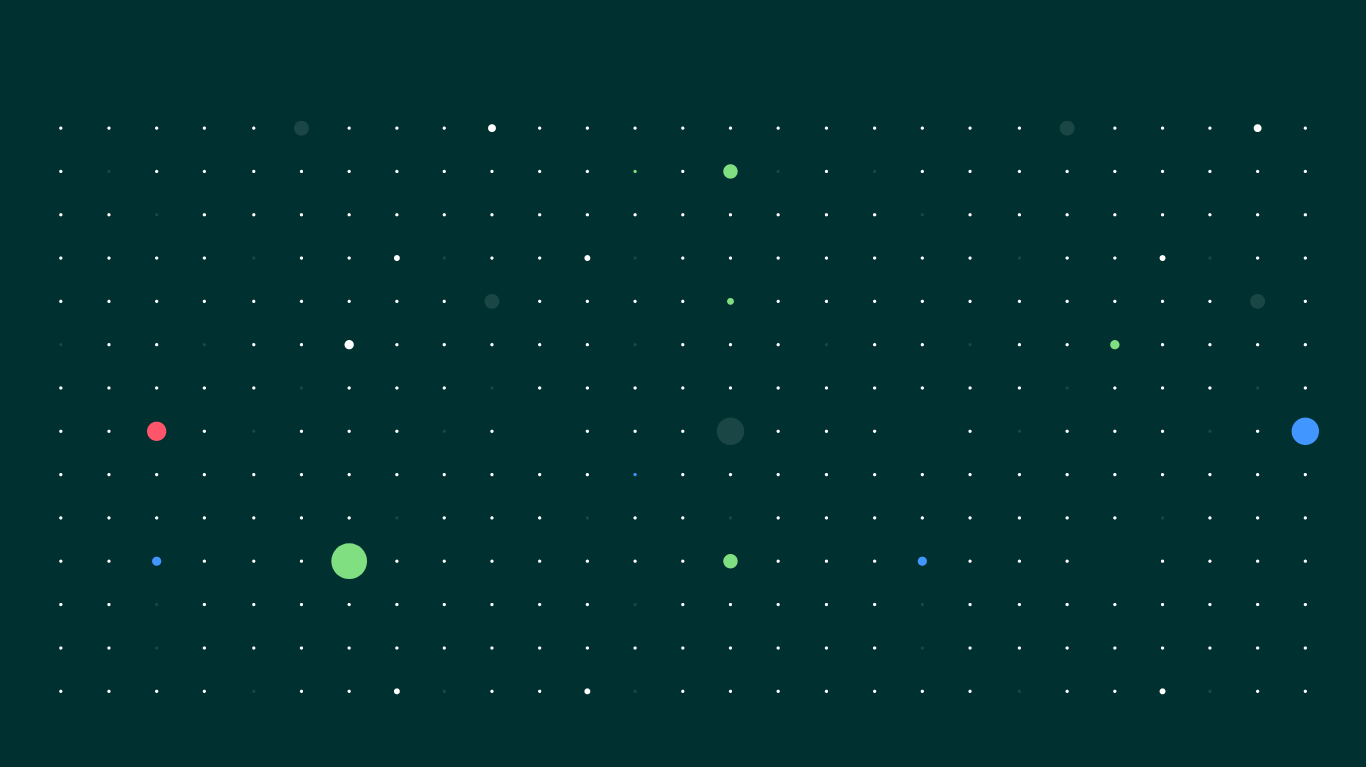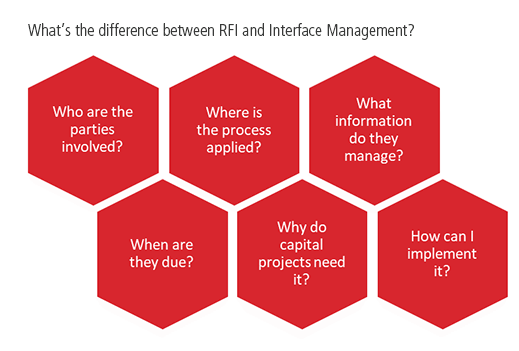
RFI Does Not Equal Interface Management
We often get asked, what’s the difference between request for information (RFI) and interface management (IM)? At first glance, these business processes seem similar, both help to manage significant risk to projects by facilitating communication and information exchange, but each one performs their own unique project-critical role. So, what sets them apart? The answer to this can be broken down and defined according to the basic 5 Ws, who, what, where, when, and why, for each solution. And, as a bonus, we will supply the "how" at the end of this article.
Who Are the Involved Parties?
A request for information (RFI) is typically a request from a contractor to the client or the client’s consultant team. Whereas interface management, and interface agreements in particular, track the exchange of information and deliverables between all interfacing parties which include both internal and external delivery teams and, more importantly, the parties involved often have no contractual relationship, but are required to share information and deliverables. The interface matrix on a mega capital project is very complex; much more so than a typical RFI communication matrix and managing the ‘chaos’ the multiple IM communication channels brings to a project is critical.
Where Is the Process Applied?
Both RFIs and interface agreements expand the entire project life cycle. Where they deviate is in the planning.
RFIs are an unplanned, reactive process. It’s very unlikely you could identify the majority of RFIs in advance and write them into a contract commitment. Project interfaces, on the other hand, can be identified and planned for in advance to mitigate the overall risk they create. Best practices promote the early identification and tracking of interface points and interface agreements. Many of the projects Coreworx has partnered on have enforced the early identification of interface agreements where contractors have been required to document what they need from others very early on.
What Information Do They Manage/Define?
When comparing RFIs to interface agreements, the content they each manage is very different. An RFI is often a question asked and a question answered, whereas interface agreements are often deliverables based.
Unlike RFIs, interface agreements are tied to an interface. A key concept of interface management is clearly defining scope. The ability to eliminate ambiguity and clearly define roles and responsibilities is the backbone of interface management. At Coreworx, we facilitate this through our interface point model, which is also defined as best practice by CII (RT 302).
Interface points are used to define the boundaries or connection points between scopes of work, ensuring no gaps or overlaps in scope. They provide a description of the interface, identify responsible parties and ensure all details related to an interface, including requirements, technical details, and potential issues are resolved. Managing an interface register ensures that all parties understand how one scope of work, under the responsibility of a contractor, might affect or be affected by the scope of work covered by other contracts. A standard RFI process does not include identification and management of these interfaces.
RFIs, other than the requester/responder and the reason for the RFI have no ‘anchor’; they often result in a large register of unrelated queries. Interface management provides structure; interface agreements are tied to an interface point, which in turn is tied to a scope of work. It is this relationship which gives the project management team the ability to measure and monitor progress starting with individual deliverables, rolling up to the interface and to the package level. This relationship also provides the ‘big picture’. Looking at a single interface, one can see all interface agreements across all phases and can understand why decisions were made under whose direction. This provides huge advantages when dealing with high user turnover, handover to operations, and supports efficient discovery.
When Are They Due?
Setting due dates on RFIs also differs from interface agreements. For each interface agreement, interfacing parties are required to document what they need from others very early on, including the need date of each request and these dates should be schedule-driven. RFIs, in contrast, often have contractual turnaround commitments that dictate response times for all RFIs.
Why Are These Processes Used on Capital Projects?
As we mentioned above, both business processes are used to mitigate project risk. To successfully manage complex capital projects, you must effectively manage communication and information exchange and the related processes inherent on these projects. Now that you know the 5 Ws of each process, you can see why each solution is needed to perform their own unique and critical role in managing your project information. If done properly, you will mitigate associated risks that impact quality, safety, schedule, and budget.
Actually, when you think about it, implemented correctly, interface management should reduce the number of RFI queries you have to deal with during construction!
5W Summary - Plus How
As a summary, here is a table of the RFI and interface management 5 Ws, plus, see the last cell in the table for the bonus answer of How to implement these processes!
|
|
RFI |
Interface Management |
|
Who are the parties involved? |
Tracks a request from a contractor to the client |
Tracks information and deliverables between all interfacing parties, including, the parties who often have no contractual relationship, but are required to share information and deliverables |
|
Where is the process applied? |
More ad hoc in nature, can be used throughout the entire project lifecycle |
Early planning with interface agreements often defined upfront, also provides ability for ad hoc creation |
|
What content do they manage |
A question asked, and a question answered |
Define the boundaries or connection points between scopes of work, ensuring no gaps or overlaps in scope, often deliverables-based |
|
When are they due? |
Include contractual turnaround commitments set for all RFIs |
Defined for each interface agreement and usually schedule-driven |
|
Why do projects need this process? |
To mitigate project information-related risks that impact quality, safety, schedule, and budget. |
To mitigate interface-related risks that impact quality, safety, schedule, and budget. |
|
How do projects effectively implement this process? |
For information on how to implement a proven RFI process on your capital projects, see details on our Coreworx RFI solution. |
For more information on how interface management can be implemented on your capital projects to help mitigate risks, see the Interface Management Case Study – Oil & Gas Project Finishes On Schedule webinar recording. |





